The Good Farm – a raw milk producer and market garden in the Bay of Plenty – is a real family affair.
Former chef Loren Gibbs tells us about trading in the heat of the kitchen for digging in the dirt and dawn milking.
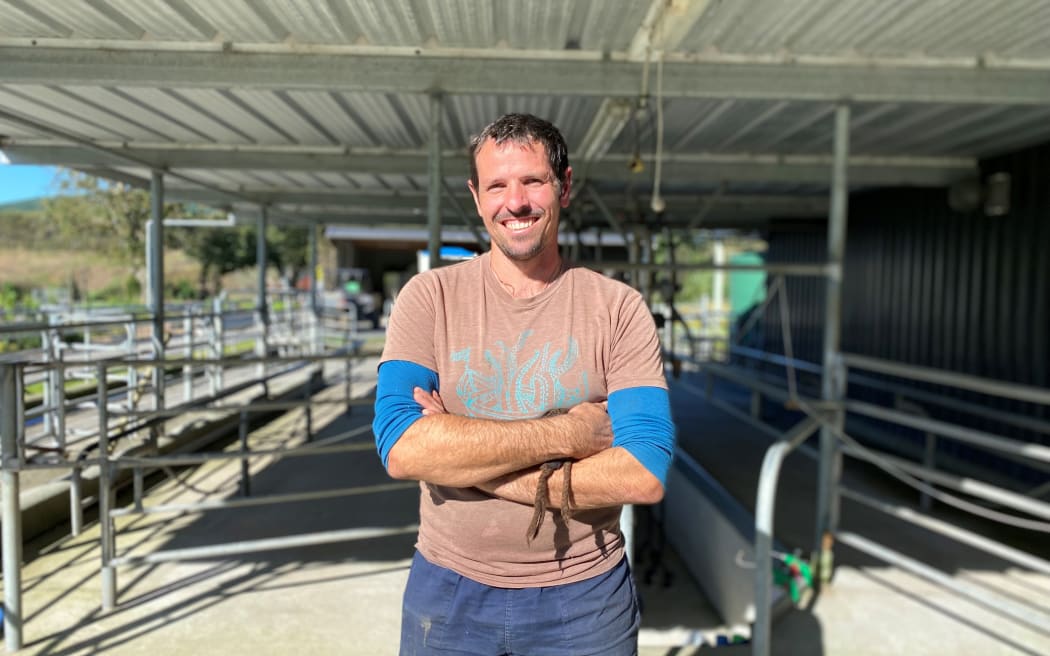
Former chef turned farmer Loren Gibbs. Photo: RNZ/Leah Tebbutt
It's the first sunny day in a long time when we meet Loren Gibbs at the Good Farm on the back road between Welcome Bay and Te Puke.
Here on the near 10-hectare property, you'll find Gibbs either sowing seeds in the market garden or preparing the girls' udders for raw milk sold onsite.
"I've changed a lot since my hospitality days to almost being a different person," Gibbs says.
"After 12 years of that high-stress, intense working environment it's taking probably a couple of years to relax a little bit and not be caught up with deadlines."
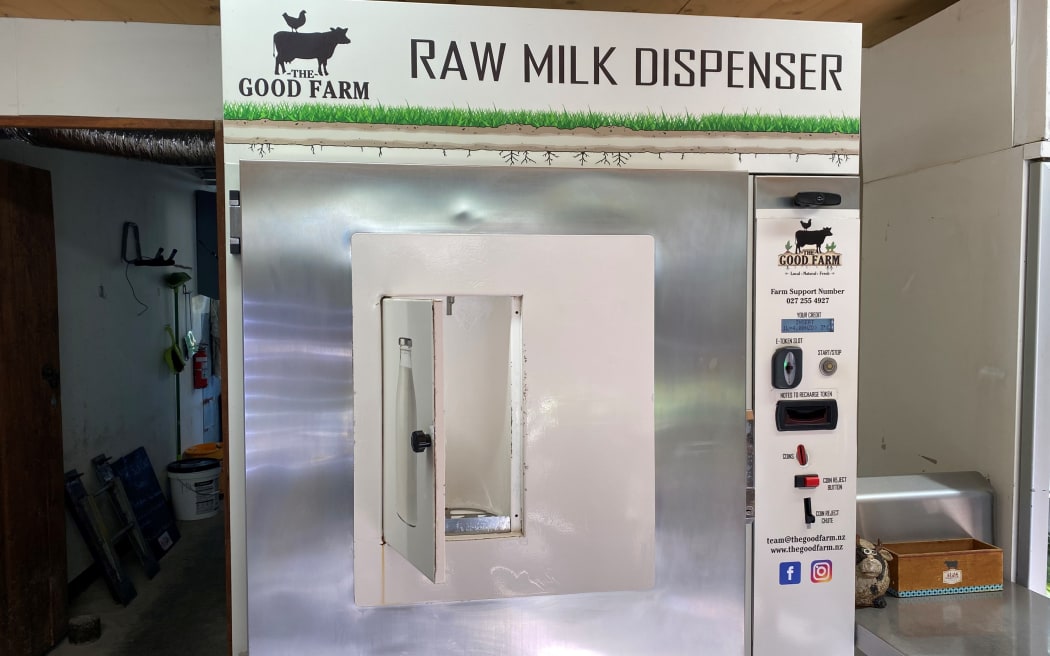
The raw milk vending machine-style dispenser. Photo: RNZ/Leah Tebbutt
The Good Farm is a family affair. Gibbs said it was his in-laws who approached him and his wife Michaela about buying the established milk-direct and market garden business together, not too far from the Welcome Bay township.
With no farming experience to their name, Gibbs admits it took some convincing.
Yet for nearly four years now, he's been getting up at the crack of dawn to milk the 16 cows that provide raw milk via a vending machine in their farm shop.
"I think that is why I have that passion for it because I have worked with all the food on the other end but now I'm doing the beginning part."
Throughout summer, a Friesian and Jersey mixed herd of 20 to 25 cows graze on a 20-day timetable. This is pushed out to around 60 days through winter to create a stable volume of milk.
"We calve year-round. I try to get two cows calving each month so they're bringing in fresh volume of milk and I'll dry off a couple of cows so that we've always got about 16 cows in the milking shed.
"[We're] always trying to push about 180 or 200 litres a day."
Gibbs personally tends to the 16 cows every morning but the process of producing raw milk is much more time-consuming, he says.
In New Zealand, raw milk, which is not heat-treated, can only be sold by farmers registered with the Ministry of Primary Industries.
There are several protocols to follow - one being a farmer can only sell their product directly from the farm gate or via home delivery.
Gibbs has to ensure the cows' udders are free from any dirt, poo, or contamination before sanitising each teat. Then he can start milking.
"So that bit actually takes longer than the milking itself."
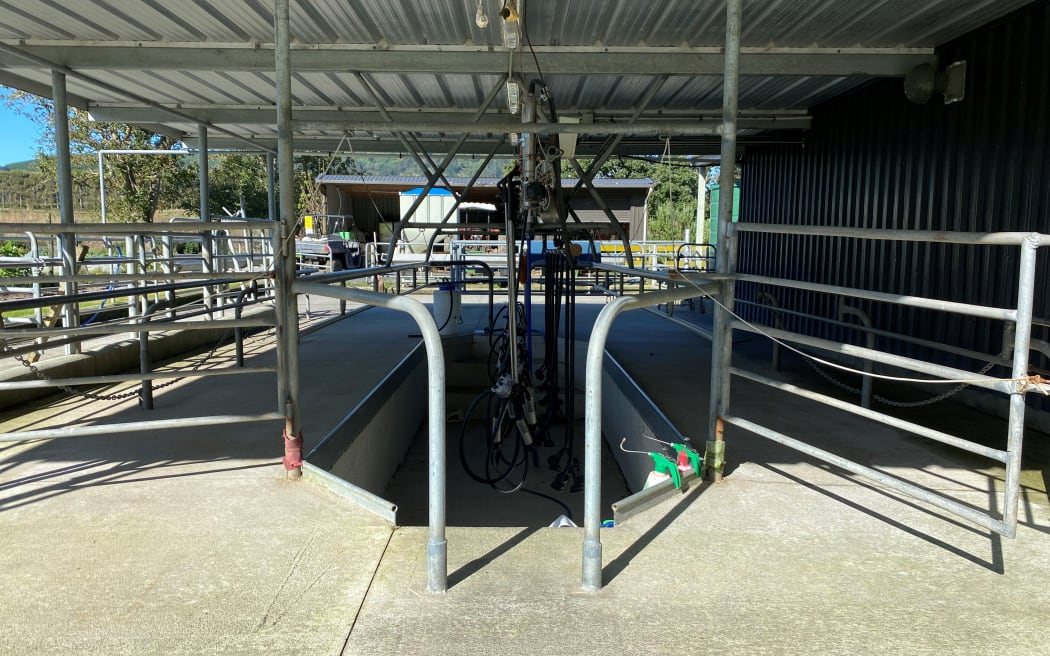
The raw-milk herringbone cow shed at The Good Farm. Photo: RNZ/Leah Tebbutt
The sanitisation process doesn't stop with the udder, however. Gibbs' milking shed looks clean enough to eat off.
"One it needs to be...to minimise any contamination," he says.
"But on a more practical level that's where our customers come in. The theory on that is if we can make it look clean and presentable then it is more appealing in the end of selling our product."
With raw milk, the bigger difference is what happens after, Gibbs says. It goes through a filter, much like a coffee filter, before heading into a water cooler, radiator-type system.
"Milk travels along one side of it and cold water travels the other side and that's how it cools it down.
"It then goes into this vat and I'll roll that into our fridge dispensing unit and people bring their own bottles, put the money in, hit start, fill up their milk."
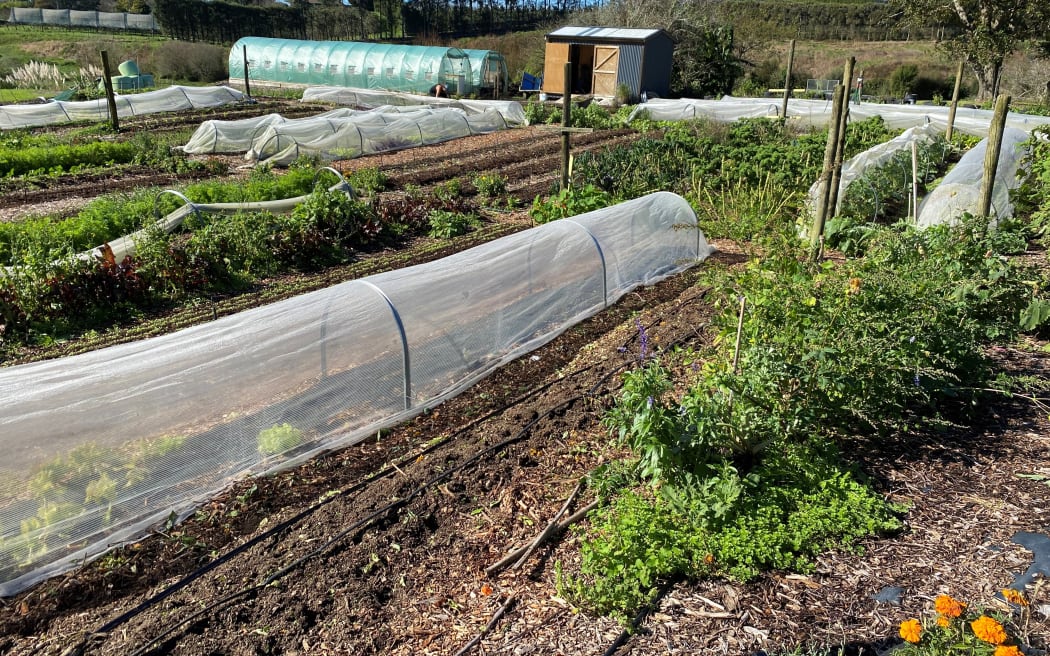
The market garden is on a quest to pay for itself which a wide range of vegetables and salad mixes. Photo: RNZ/Leah Tebbutt
Raw milk is just one aspect of the Good Farm business - Gibbs has also quadrupled the size of the market garden, which is run on organic principles since taking it on.
He is working to expand the production of the no-dig veggie garden so it can start paying for itself.
"It's a lot of work in the veggie garden, it's about 60 hours of work a week. So to make it pay for itself is the goal."

Thunder and Biscuit (left), two Wessex-Saddleback pigs. Photo: RNZ/Leah Tebbutt
Every week, Gibbs has 30 hours of help from a gardener. When he is not milking, planting a native corridor, or tending to any other cow-related issues, his hands are in the soil.
"We're trying to do mainly high turn around crops that are ready in a three month period."
Beetroot, spring onions, and a variety of broccoli that allows multiple cuts are some of the vegetables you will find in heaped garden beds.
One of The Good Farm's biggest sellers is the salad mix of 12 leafy varieties combined with some herbs and edible flowers.
All produce can be brought from the farm shop, right next to the raw milk vending machine, he says.
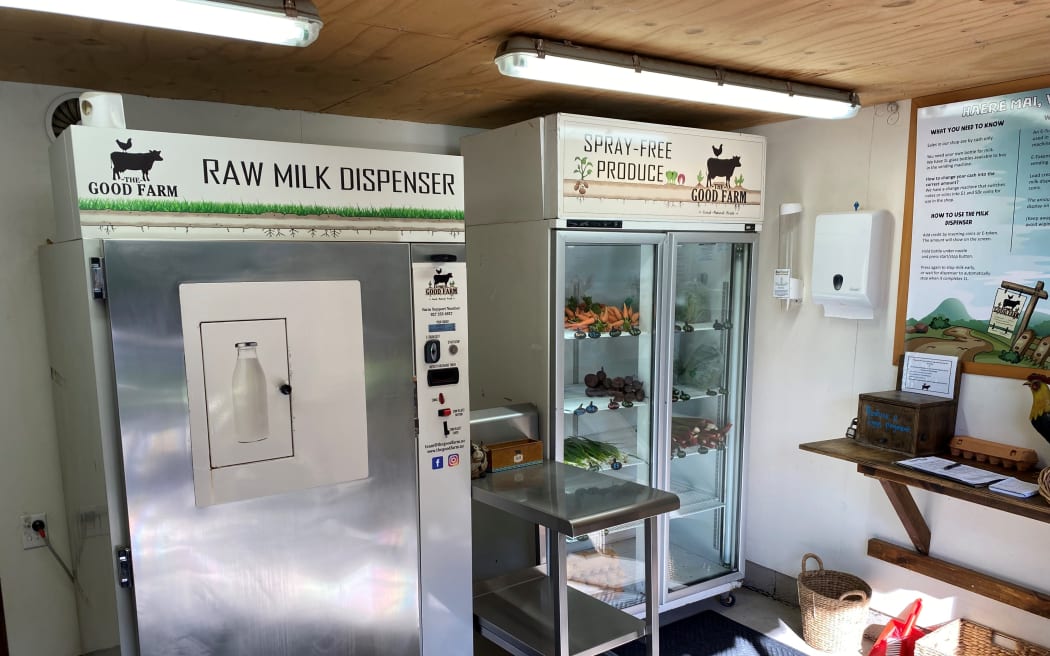
The inside of The Good Farm's shop selling everyday fresh raw milk and produce. Photo: RNZ/Leah Tebbutt


